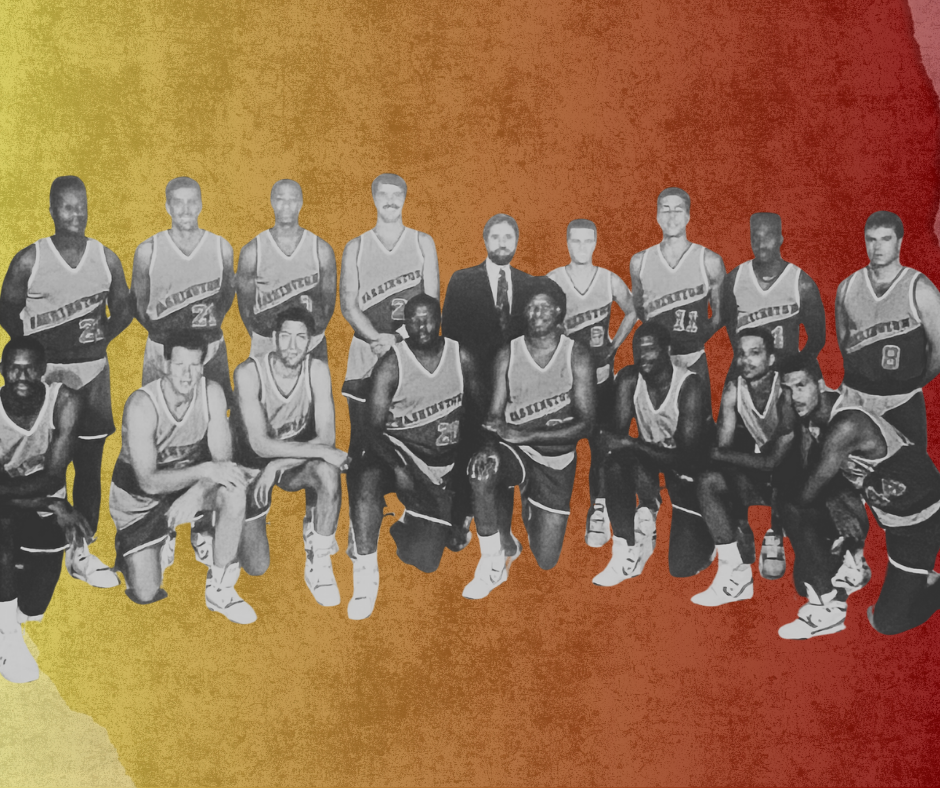Losing is one of the hardest things for athletes, teams, and fans to endure. Defeats seem to stick longer than victories, often overshadowing all the good that came before them. Many athletes even use painful losses as motivation, keeping reminders close so they never feel that way again. Even Super Bowl champions will admit they still dwell on the games they lost.
If losing just one game can be that painful, how must it feel to lose every game? How must it feel to enter every contest knowing that the odds of even coming close to a win are almost impossible? Imagine playing a game where the fans are actively rooting for you to lose and will be upset if you do anything that resembles winning. Sounds nightmarish, right? Welcome to the life of the Washington Generals.
The Washington Generals, the longtime foils of the Harlem Globetrotters, are synonymous with losing. When someone describes a team, organization, or individual as the Washington Generals, what they mean is that they are the epitome of futility, existing only to make the other side look good. The disclaimer of course is that the Generals are not playing real competitive basketball. Their role is scripted. They are paid to lose. But that fact does not erase the public perception. They are tied to losing, and losing badly.
Yet buried within the long, sad history of defeats are a few surprising moments. Official records disagree on the exact number of wins in the Generals’ history. Some sources say six. On their official website, the Generals claim three: one in 1954, another in 1958, and their most famous in 1971. That 1971 game is sometimes reported as their only win, and whether or not that is true, it is certainly the one that stands out the most. It has the most available details and the most compelling story.
In 1971 the Generals were not even called the Generals. They were going by one of their many alternate names, the New Jersey Reds. But the identity did not matter. They were still the same function, the same role, and the same players in different uniforms. They were still the team expected to lose. The Reds, like every other incarnation of the Generals, were a group of former college standouts, ex NBA players, and assorted professionals who could play the game but were bound by the script of defeat.
Leading them was Herm “Red” Klotz. Klotz was more than just a coach. He was a former college and professional player in the league that served as a forerunner to the modern NBA. He was also the team’s coach, manager, and owner. In 1971, Klotz was 50 years old, but he remained the heart of the Generals’ operation. More than anything, Klotz believed in effort. He preached to his players that they should always try as hard as possible during every game, even if the result was predetermined. The Generals had to play hard enough in the stretches of real basketball to make the show believable.
That night in Martin, Tennessee, something unusual happened. The Globetrotters were missing star Curly Neal. Their shots were not falling. Their usual bag of tricks was not landing. The Reds, meanwhile, were playing at full throttle. Klotz’s trademark set shot, an old-fashioned weapon from the days before the three-point line, was dropping again and again. Frustration built up in the Reds players, and they began to play with a real edge. They hustled. They played defense. They dove for loose balls. They fought for rebounds. They did everything a real team would do when trying to win. And suddenly, against all logic, they were winning.
Details of the game are hard to pin down, but the general outline is clear. The Reds built a lead late in the game. Some reports suggest it was in the fourth quarter, others that it stretched into overtime. Regardless, the impossible was unfolding. The Globetrotters realized they were in danger of losing and launched a furious comeback in the closing minutes. They tied the game and had a chance to pull ahead.
But then Herm Klotz struck. He hit a clutch shot that gave the Reds the lead. The Globetrotters still had a final possession. Meadowlark Lemon, one of the most famous Globetrotters of all time, rose up for the potential game winner. The ball missed. The buzzer sounded. The impossible had happened.
The crowd did not know how to react. When a Cinderella team upsets a powerhouse in March Madness, the arena explodes in joy. In Martin, Tennessee that night, the opposite occurred. As Klotz later remembered, “They looked at us like we killed Santa Claus.” The fans were stunned. Children cried in the stands. The audience had not paid to see the Reds win. They had paid to see the Globetrotters entertain them with tricks and dunks and a victory. Instead, they witnessed history.
In the locker room, emotions ran high. The Reds poured orange soda over Klotz in celebration. The Globetrotters’ owner stormed in and threatened to fire every Reds player. Meadowlark Lemon offered congratulations, but Klotz later admitted he could tell Lemon was seething inside. Losing was not part of the script, and it stung.
Still, the win counted. It snapped a Globetrotters win streak that had stretched to 2,495 games. For once, the rock Sisyphus pushed up the hill stayed there.
That night in 1971 remains the only confirmed victory for the Generals and their alter egos since the 1950s. No matter how disputed the numbers may be, and no matter how small the sample, one thing is clear. In Martin, Tennessee, for one night, the Washington Generals were not defined by losing.
Want more Sandman? Come connect with us here at sandmansports.com/onestopshop





